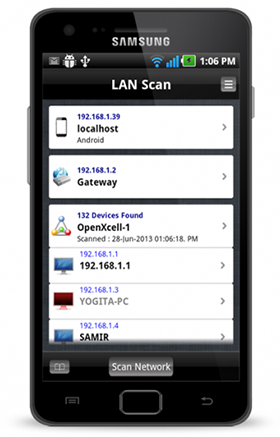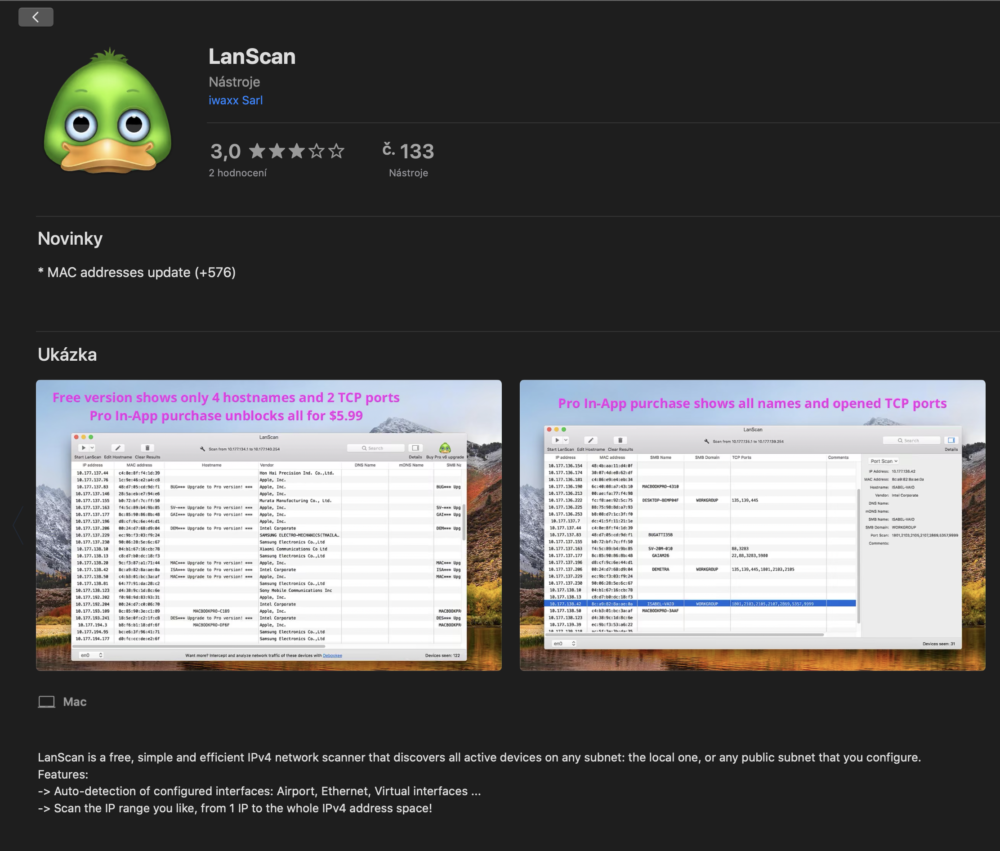

Wake on LAN sends a special WOL packet to the device with the provided MAC address. The custom range can be entered in the subsequent dialog. Scan Custom IP Range can be used to scan a custom range of IP addresses which can be different from the wifi network configuration. The Options button (or menu button on Android) in the toolbar can be used to display a list of additional actions which can be performed from this page:Ĭlear History deletes all the history items from the list. The scan can be initiated by pressing the green Scan button in the top-right corner of the page. LAN scanner scans all IP addresses in the connected wifi network and discovers devices connected to the same network. The LAN page provides access to the LAN scanner.
LANSCAN APP ANDROID
Note that the channel width information is only accessible on Android 6 and newer devices - for older devices the 20MHz width is always displayed. Also, the signal strengths change depending on your location - pick the best channel for the locations where you plan to use the Wi-Fi network most. Note that also signal strengths should be taken into account - often it is better to use a channel with many weak signals than a channel with a single strong signal as the weak signals are more or less a noise and interfere much less than the strong signal. One should look for the four smallest neighboring values in the plot and select the middle channel as the channel used by the router. For instance, when the new network uses 20MHz bandwidth it spans four channels. This view is useful for determining the least used channels when setting up a new Wi-Fi network. The colors correspond to the networks from the channel list or channel graph. The values are stacked on top of each other and are normalized relative to the most used channel.

The networks are displayed so that it is easy to see the overlap of their bandwidths.įinally, the channel usage view shows all the networks which use thegiven channel. The individual network signal masks are depicted in the graph together with the corresponding network name (SSID or custom name, see above).

In the channel graph view, the X-axis shows channel numbers and the Y-axis the signal strength in dBm. Here, one can also override the network name with a custom name which is then shown instead of SSID. Each of the rows in the list is selectable - when a row is selected, a page with additional details about the network is shown. It is possible to search for a given network by pressing the loupe icon in the toolbar or sort the list by signal strength, channel or SSID by selecting the corresponding item from the toolbar menu. The connected network is shown with a green background. Also, the first toolbar icon toggles between the 2.4 GHz and 5 GHz ranges.įor each Wi-Fi network the channel list shows the channel number, SSID and the signal strength (colors indicate the signal strength: green - strong, yellow - medium, red - weak), BSSID, the corresponding manufacturer, network type ( WEP, WPA, WPA2), encryption standard used ( TKIP, AES), channel width and whether the network supports WPS. The views can be toggled by a view selection button in the toolbar or by swiping left/right between the individual screens. There are three different views: channel list, channel graph, and channel usage. The Wi-Fi Signal page shows all the Wi-Fi networks in the neighborhood together with their signal strengths, associated channel and other information. Note: This feature is available in the Android version of the app only.


 0 kommentar(er)
0 kommentar(er)
